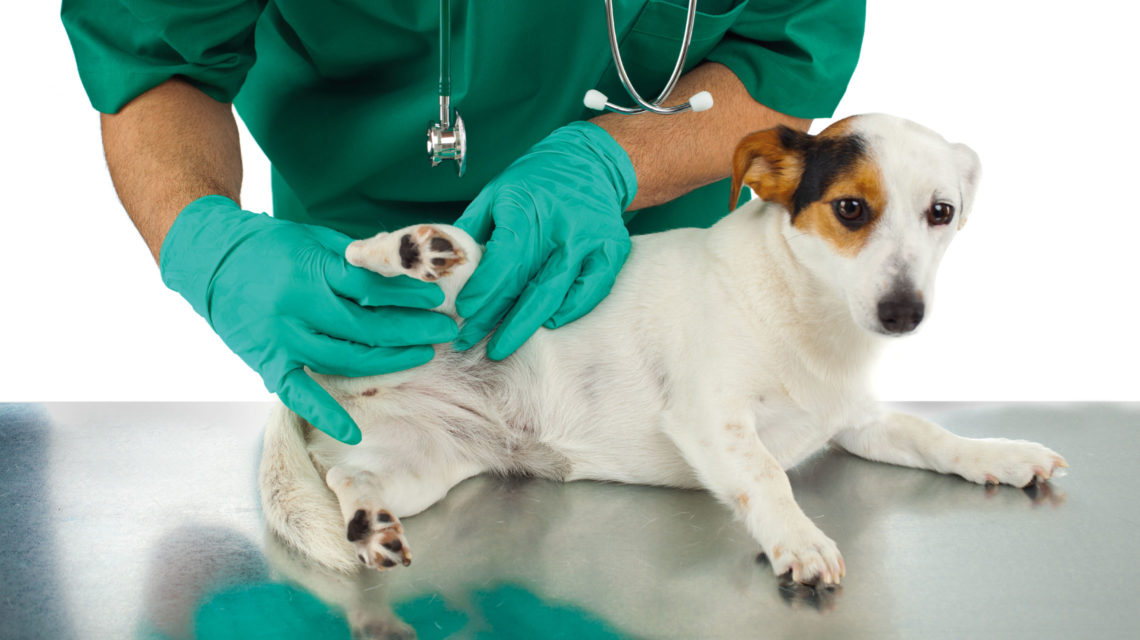
Naturally supporting a dog with joint issues
Running, jumping, swimming and walking are all vital exercises our dogs enjoy doing, but suddenly when these activities become harder or cause our dogs pain, it can be an up-setting time. Trying natural supportive methods to help get your dog moving freely again is a great place to start. Joint issues are an extremely common problem for our four-legged family members, but there are a multitude of treatments to try so work with your veterinarian to tailor your treatments to your individual dog.
To begin to understand how to treat joint issues we must first understand how they arise. Joint disease/ arthritis is an inflammation of the joint and osteoarthritis refers to chronic joint inflammation caused by degeneration of the supportive cartilage and collagen cushioning within the joint. Collagen is found in joints and connective tissue of the body, as this breaks down the joint becomes less stable leading to degeneration, disk disease, arthritis and tendonitis. There are a wide variety of causes for joint issues such as from trauma, ligament, tendon or muscle disease, fractures, developmental diseases like dysplasia, congenital disorders, dietary and hormonal disease, metabolic disease, cancer, and degenerative diseases, which are most commonly combined with inflammatory joint disease. Genetics often play a prominent role and can occur from an early age in some dogs due to poor breeding.
There are multiple ways of treating and supporting joint issues, here are some of the main more natural approaches:
Diet
Through a multitude of dietary manipulation methods we can decrease inflammation on a cellular level within the body. It truly is the starting support of cellular function. How effectively cells function within the body is dependent on the quality and bioavailability of the food we feed our pets. The absence of disease is not the definition of health; nutrition should be used as a preventative to promote health. Certain foods like grains and diets high in starches will support and increase inflammation within the body. Dry diets are much higher in Omega-6 to Omega-3’s, which is pro-inflammatory on a cellular level. A raw or fresh diet has a healthier ratio of Omega-3 fatty acids to assist in the reduction of cellular inflammation. Often switching diets can be the best treatment for dogs with joint issues; a species appropriate diet like balanced Raaw pet food, which is rich in collagen, cartilage, minerals and vitamins will assist in joint health. Raw diets are species appropriate and naturally help support the decrease in inflammation within the body. Cartilaginous foods like tracheas and chicken or duck feet are rich in natural glucosamine and chondroitin to help support joint function. Joints are surrounded by soft tissue, ligaments, tendons and muscles, these all help support the joint moving; feeding raw joints from prey animals is thought to be a natural supportive way for feeding dogs with joint issues. Fresh vegetables and fruit are rich in vitamins and minerals to support overall health and a healthy immune system will support a healthy recovery especially in surgical cases.
Nutraceuticals
Glucosamine and chondroitin are a first step many vets will initially recommend trying. It is part of a nutraceutical supplement group called glycosaminoglycans (GAG’S) also known as mucopolysaccharides. These include glucosamine in sulphate and chondroitin sulphate from sources such as chitin (the shells of shellfish), green lipped muscle and cartilage. Glucosamine and chondroitin give cartilage forming cells the building blocks to synthesise new cartilage and repair damaged cartilage. Chondroitin specifically enhances the synthesis of GAG’S and inhibits enzymes that could potentially damage the joint.
GAG’S assist in supporting and protect the joint as opposed to just reducing the symptoms; they do this by helping the re-building of cartilage and restoration of synovial fluid. When administering GAG’S, start with a high dose if your dog is showing symptoms of joint issues. This way you can monitor and assess if your dog is responding well, and then you can reduce down, maintaining improvement at a lower dosage over time. If you see no improvement over 3-4 weeks try a different GAG supplement. These products are relatively safe with few side effects.
Injectable osteoarthritis agents like polysulfated glycosaminoglycans are injected by your veterinarian over the duration of a few weeks. They assist in preventing the breakdown of cartilage and in the synthesis of new cartilage. Hyaluronic acid is another injectable agent often highly successful when used in the management of osteoarthritis, it is injected directly into the joint to increase the viscosity of the joint fluid; acting as an anti-oxidant and reducing inflammation.
Probiotics are found in fermented foods and in nutraceutical supplements. The addition of probiotics in an un-balanced gut can dramatically improve health and increase absorption of nutrients to support joint health. If the gastrointestinal tract is under stress or compromised the whole body is not functioning optimally and joint function and repair can easily become compromised.
Weight and exercise
Weight and exercise go hand in hand when it comes to joint issues as obesity will put extra stress on the joints, especially when moving and in the case of larger breeds which are renowned for joint issues. Weigh food and your dog regularly, as well as checking your dogs’ body condition score; it’s helpful to take regular photos of your dog in the same position (front, side and above) so you can track any changes that may go missed when you spend every day with your pet.
If needing to lose weight, a low carbohydrate, high protein diet rich in essential fatty acids will be more suitable for your dog. You can also begin slowly reducing your dog’s current diet to a maintenance feed suitable for your dog’s ideal bodyweight. Ensure that the reduction is gradual and consideration is taken for health, metabolism and lifestyle. Low impact exercise like walking or swimming, which is non-weight bearing, will help maintain flexibility and muscle development to assist joint support. Ensure any treats being fed are included in your dog’s daily calorific needs.
Natural anti-inflammatory supplements
These work successfully with diet and are a great place to start if you suspect joint issues or are wanting to prevent them. Omega-3 fatty acids found in fish oil are rich in EPA & DHA which when utilized by the body have been found to have an anti-inflammatory effect. Supplements must be given in moderation.Too much fish oil can deplete the body of Vitamin E, therefore it is not always the case that more is better.Work with a certified nutritionist or speak directly to your vet for more advice. Bromelain has also been found to have strong anti-inflammatory properties on the body, especially when combined with a flavonoid like quercetin. Herbs are fantastic for reducing inflammation, some of the most common are boswellia, stinging nettle, willow bark, hawthorn and turmeric. Golden paste is a common homemade recipe to make for joint health: a combination of coconut oil, turmeric and black pepper help to improve bio-availability from the herb. SAM-e (s-adenosylmethionine) is a supplement that can reduce inflammation and stiffness, an be used to support the liver; SAM-e is best given apart from food for optimal absorption.
Daily maintenance
Daily maintenance is also a form of treatment. Warmth, as we know for ourselves, can help to reduce pain, so ensuring your dogs has soft comfortable bedding will help your pet feel more comfortable when resting. Joint wraps particularly for dogs suffering from arthritis during older age can help support movement especially when outside exposing the joint to cold air. General household changes like getting a ramp to help your dog get up and down stairs or into the car will make moving around the home easier. If your dog has back or neck issues raising the feeding bowl can also make feeding easier.
Alternative natural therapies
Dogs with joint issues respond extremely well to acupuncture, massage and chiropractic treatments. Especially if a dog is favouring a particular leg, it is easy for the dog to become misaligned. These treatments are a great place to start with a huge variety of joint problems and have great success when combined with diet and previous treatments mentioned.
Hydrotherapy derives from the Greek word meaning water healing, or using warm water pools and treadmills uses the benefits from the buoyancy of the water which allows muscles to be exercised without the strain of weight. Warm water helps relax and soothe stiff and painful joints. Swimming is an excellent way for dogs to regain strength and stamina that may have been lost due to aging, illness or injury. When a joint is injured fluid will often accumulate around the area causing swelling and pain. Hydrostatic pressure of the surrounding water helps to reduce the swelling by promoting fluid movement away from the swollen joint.
Vets often recommend hydrotherapy before surgery to help build and tone muscle mass to decrease post-operative rehabilitation time. It can also of course be used after surgery to help support recovery. Muscles can begin to waste after just three days of immobilization, yet safe controlled movement in hydrotherapy can prevent this or help rebuild any muscle wastage.
One of the most important things to remember in joint issues is there isn’t always a one fix cures all, and it may be that you must try a few options or a combination of supplements and management that works for your lifestyle and your dogs. Always work closely with your veterinarian to ensure correct pain management and support. Joint diseases can be a frustrating and devastating to watch, especially as movement is one of the most vital ways our pets can communicate with us. Prevention is always better than cure, so be aware of how you feed, your lifestyle, and the way your dog functions as these all play a role in the potential for joint issues.


